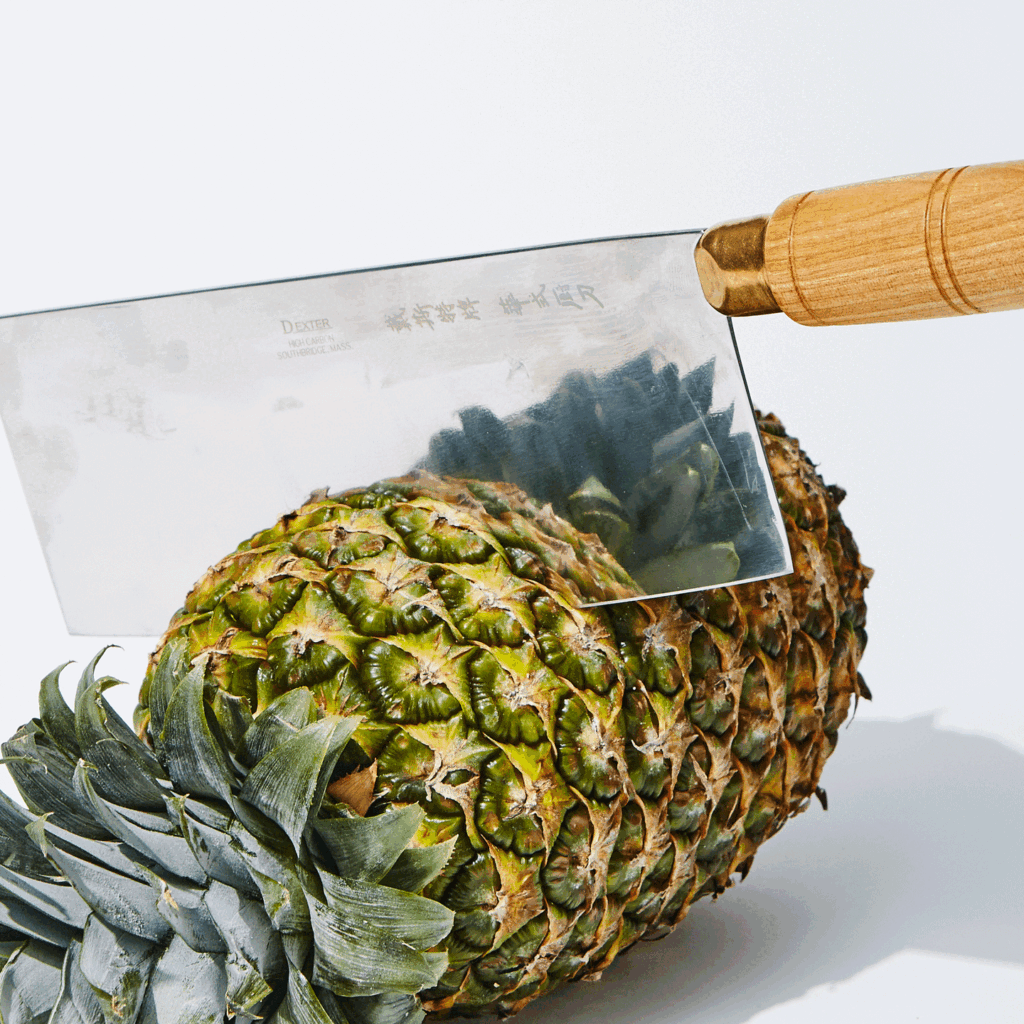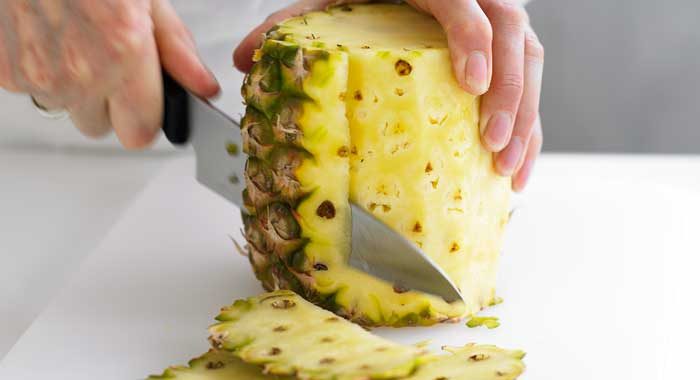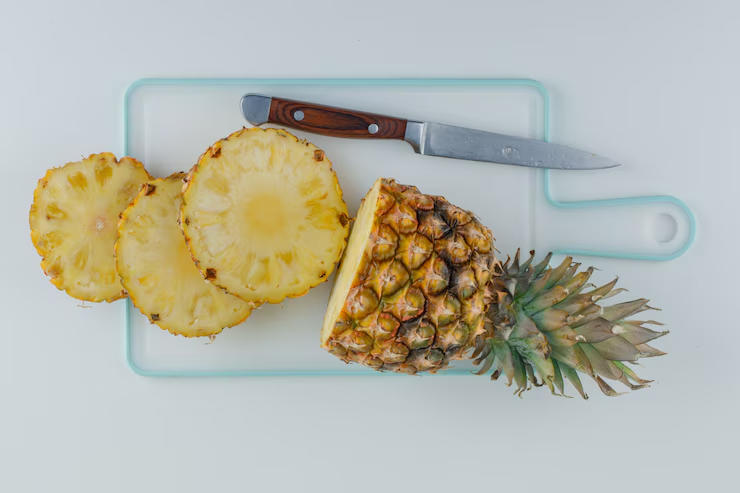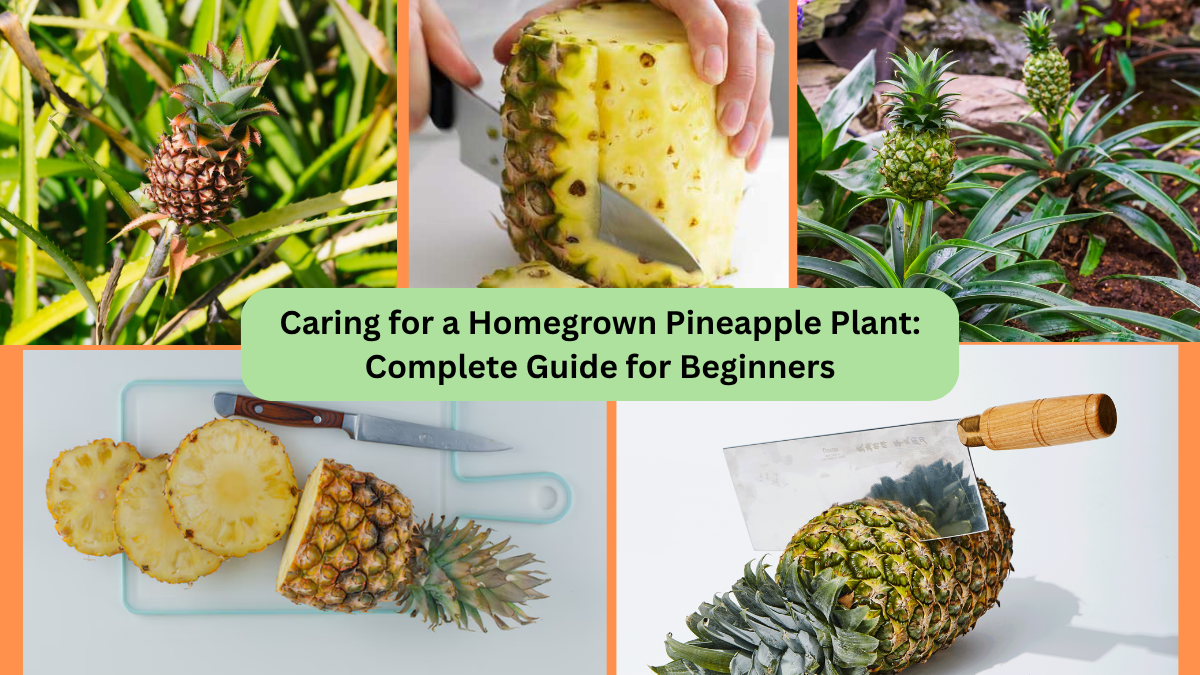There’s something wonderfully satisfying about growing your own tropical fruits at home — and few are as charming, low-maintenance, and rewarding as the pineapple plant. Whether you started your plant from a store-bought pineapple top or purchased a young nursery plant, knowing how to properly care for it will ensure healthy growth and, eventually, sweet homegrown fruit.
Pineapples aren’t just a culinary treat — they also make stunning ornamental plants, adding a touch of tropical flair to patios, balconies, and indoor spaces. Best of all, they thrive in containers and don’t require a large garden or advanced gardening skills.
In this comprehensive guide, we’ll cover everything you need to know about caring for a homegrown pineapple plant, from sunlight and watering to fertilizing, pest control, and harvesting.
Why Choose a Pineapple Plant for Your Home?

Pineapples (Ananas comosus) are part of the bromeliad family, known for their resilience, drought tolerance, and distinctive rosette of spiky leaves. While they’re native to tropical and subtropical regions, they adapt surprisingly well to home environments when given the right care.
Benefits of Growing a Homegrown Pineapple:
- Easy to grow in pots or small spaces.
- Low maintenance and drought-tolerant.
- Visually striking, adding tropical ornamental appeal.
- Can produce sweet, fresh fruit after a little patience.
- Can be propagated from pups and crowns for free new plants.
Best Growing Conditions for a Pineapple Plant
Pineapples flourish in warm, sunny, and slightly dry environments. Mimicking their native tropical habitat at home is the key to a healthy, thriving plant.
Sunlight:
- Pineapples need 6–8 hours of bright, direct sunlight daily.
- Indoors: Position near a south or west-facing window.
- Outdoors: Place in a sunny, sheltered spot.
If indoors light is insufficient, supplement with a grow light during winter or cloudy months.
Temperature:
- Ideal temperature: 65–95°F (18–35°C)
- Pineapples dislike cold drafts and temperatures below 60°F (16°C).
- Move indoor plants away from windows during cold nights.
In colder regions, bring outdoor plants inside before the first frost.
Soil:
Pineapples require well-draining soil to prevent root rot.
Best soil mix:
- 50% potting soil
- 25% sand or perlite
- 25% compost or coconut coir
A cactus or succulent potting mix also works well.
Container:
Use a pot with:
- Good drainage holes
- Minimum 8–12 inches deep and wide
- Lightweight, breathable materials like clay or plastic
As the plant grows, you may need to move it to a larger pot for stability.
Watering a Homegrown Pineapple Plant

Pineapples are drought-tolerant and prefer slightly dry conditions. Overwatering is one of the most common mistakes.
Watering Guidelines:
- Water when the top 1–2 inches of soil feel dry.
- During hot weather: about once a week.
- In cooler months: every 10–14 days.
- Avoid waterlogging. The plant’s central cup (rosette) can be filled with a small amount of water occasionally, mimicking natural rainfall.
Tip: If the leaves start yellowing or wilting, check for overwatering or poor drainage.
Fertilizing Your Pineapple Plant
While not heavy feeders, pineapples benefit from occasional nutrients.
Fertilizing Tips:
- Use a balanced, liquid fertilizer (10-10-10 or 14-14-14) every 4–6 weeks during the growing season (spring and summer).
- Organic options like compost tea or slow-release granular fertilizers also work well.
- Reduce or stop fertilizing during winter when growth slows.
Pro Tip: Foliar feeding (spraying diluted fertilizer onto the leaves) is especially effective for bromeliads like pineapples.
Common Pests and Problems

Pineapple plants are relatively pest-resistant but can occasionally encounter issues.
Common Problems:
- Root Rot: From overwatering. Use well-draining soil and avoid waterlogged pots.
- Yellowing Leaves: Often due to cold exposure, overwatering, or nutrient deficiencies.
- Mealybugs and Spider Mites: Remove with a strong water spray or apply neem oil or insecticidal soap.
Regularly inspect the base of leaves where pests can hide.
How to Encourage Flowering and Fruiting
A well-cared-for homegrown pineapple plant typically takes 18–24 months to flower and another 5–6 months for the fruit to mature.
Signs of readiness:
- Plant reaches 2–3 feet tall
- Central flower spike (inflorescence) appears
- Tiny purple flowers bloom, followed by a developing fruit
Speed Up Flowering:
Ethylene gas can stimulate flowering. Place a ripening apple or banana next to the plant under a plastic bag for a few days. The emitted gas often triggers blooming within weeks.
Harvesting Your Homegrown Pineapple

You’ll know your pineapple is ready when:
- The skin turns golden yellow
- It emits a sweet, fruity fragrance
- The fruit feels firm but slightly springy when gently pressed
To harvest: Grasp the fruit firmly and twist it off. Use a clean, sharp knife if necessary.
Propagating New Pineapple Plants
After harvesting, your plant will produce suckers (pups) or small offshoots around its base. These can be separated and replanted to start new plants.
How to Propagate:
- Wait until pups are 5–6 inches tall.
- Gently twist them off from the mother plant.
- Allow them to cure for 2–3 days.
- Plant in well-draining soil and care for as you would a crown.
This allows you to enjoy a continuous supply of pineapple plants at home!
Can Pineapples Be Grown Indoors Year-Round?

Yes — pineapples adapt well as houseplants with the right care:
- Place in a sunny window or under a grow light.
- Maintain warm indoor temperatures year-round.
- Water sparingly, ensuring soil dries slightly between waterings.
- Provide humidity with occasional misting or by placing the pot on a tray of pebbles and water.
Their striking foliage makes them an attractive addition to any room while you await their fruit.
Final Thoughts
Caring for a homegrown pineapple plant is a wonderfully rewarding hobby, whether you’re an experienced gardener or a beginner. Their dramatic appearance, low-maintenance nature, and eventual promise of sweet, homegrown fruit make them one of the best tropical plants you can grow at home.
By providing the right balance of sunlight, warmth, well-draining soil, occasional feeding, and proper watering, you’ll nurture a healthy, thriving plant. And while it takes a little patience, the reward of your own juicy, garden-grown pineapple is well worth the wait.
So, next time you enjoy a store-bought pineapple, save the crown — and start your own tropical garden adventure today!



